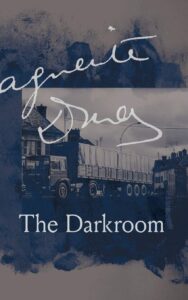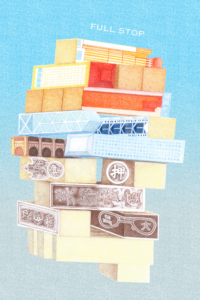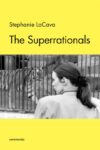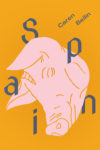
[Contra Mundum Press; 2021]
Tr. from the French by Alta Ifland & Eireene Nealand
Displacement: there is perhaps no other single word that could better characterize the work of Marguerite Duras (not even “desire”) than this one. Her formidable body of work, spanning fiction, drama, reportage, and cinema, is pervaded by missed encounters, memory loss, interminable waiting. This displacement is not limited to narrative and content but extends to literary form. In fact, it is difficult to think of another European writer who so extensively reconfigured their own work across different media: novels and stories re-worked into plays and films, often written in a language that seemingly defies such taxonomic classifications, continually inviting slippage and the possibility of transcription. Duras also regularly returned to the same bedrock of material. Her past loves and lovers; her poverty-stricken childhood in what was then French Indo China; and her experience of the Second World War and its aftermath (Duras was, among other things, an active member of the resistance), resurface time and again fixed under a new light.
The Darkroom, translated by Alta Ifland and Eireene Nealand, gathers together the script for Duras’ 1977 film Le Camion (The Lorry or The Truck) alongside four “propositions” that act as a kind of filmic manifesto, as well as an extended interview with the writer and director Michelle Porte. Le Camion in many ways represents the most “textual” of all of Duras’ films; the seventy-six minute work primarily comprising of two people, Duras herself and Gerard Depardieu, in a dark room reading a script to one another that concerns a film that has not been made but “would have been.” The reading, which was done without rehearsal, is intercut with shots of a truck driving as well as coastal and industrial landscapes, places of ruin and renewal. In these segments, voice-over provided by Duras discusses the possible conversation had between the driver of the truck and the unknown woman who hitches a ride with him, the conversation that is the subject of the film Duras and Depardieu are reading. In this way, the darkroom becomes a kind of double for the cab of the truck, the place where the story happens.
After the initial voice-over, the text begins:
GD: It’s a film?
MD: It would have been a film.
(Beat.)
It’s a film, yes.
(Beat.)
From the outset, the multiple planes of reading dislocate the “events” in the text from any fixed topology. We are presented with the script of a film that was made, a film that is itself the reading of a script for a film that was deliberately left unmade. The space of the narrative that had been displaced within the context of the film is further displaced by being published as a script. However, in another sense this change of material closes the gap: the mode of reception now constitutes an act of reading that mirrors, in part, the process undertaken in the film.
Several times throughout the text Duras aurally narrates a description of what would be in the film before asking Depardieu “Do you see?,” to which he replies in varying forms of the affirmative “Yes, I see,” “Yes,” and so on, vocalizing the process of image-making as though the scenes were actively created by the reading itself. The act of reading is the formation of the film in the cinematic work: the conversation from which the work is excavating from the “unconscious,” “ur-text” space of the darkroom. There is then an inarguable psychoanalytic register to the conversation taking place in Le Camion, the darkroom as the realm of drives inaccessible to the conscious mind, and yet the textual and formal displacement that takes place troubles such a reading even as it gives it credence. The “position” or perspective of what is taking place, the plane on which it could be occurring, remains undefined.
Duras and Depardieu continue their dialogue in an allusive, questioning frame; drawing out the possible interactions between the hitchhiker and the driver. The passengers in the truck refer to Marxism and revolution, to the barren surface of Mars, and to the woman’s son, a boy named Abraham. The political current throughout is one of disenchantment and refusal. The Stalinism of the French Communist Party to which Duras had belonged had proved capable of equally coercive and thought-destroying practices as the capitalism it supposedly opposed. This ideological blindness is the condition of the truck driver (also a party member) which counterpoints the woman’s dissonance, her dissolutive identity. This “otherness” of the woman is explicitly stated by Duras in her “Fourth Proposition”: “She’s not really living. Entirely turned toward the outside; her identity has begun to disappear.”
GD: What is she saying, the woman who has climbed into the truck?
MD: She says:
Let the world meet its end, that’s the only politics.
The landscape, truck, woman and driver, exist only as motion, as a movement of disappearance. This sense of vanishing is also the vanishing of language, the failure of words to relate directly to objects or to bring events about. The stripping away of language and the stripping away of landscape are bound up with one another. In such a space, words like “revolution” have become impossible (if indeed they were ever anything but). Towards the end of the text Depardieu again asks what the woman sees. Duras replies:
MD: Two continents, quite clearly. Both alone.
The sea has become very dark. A curfew has been imposed after sunset.
At night, there’s nothing. The forest has reached the fortress walls.
Between the continents, the ocean, its vastness.
Between the continents, nothing.
Before the sea, tanks. Monitoring the void.
The economy of writing foregrounds movement over the object: the reading rather than the text being read. This is the truck: the idea of transport, of movement, cut to the core. The focus on rhythm and shift, carefully brought out by the music of the translation, gives the text something of the character of fable or of scripture, but one where there seem to be no more stories left to tell. The landscape of destruction is one where strange affinities between words and objects emerge but any idea of direct symbolism or direct relation between word and thing has become unmoored. The darkness of the world leads to a darkness of the word:
The light of the words has darkened.
We can no longer read.
We can no longer see anything.
The writing is simultaneously light, almost transparent, and dense, reaching toward a meaning that remains beyond reach. Part of the reason is evidently political, a refusal of all political programs because of their maintenance of social inequality and state power, as well as a reaction against the ineffectiveness of “political cinema.” A large proportion of the discussion with Porte, as well as the four propositions, center on this political, or anti-political, sentiment in the film. In the “First Proposition” Duras adopts then re-phrases the woman’s refrain into “Let film meet its own end, that’s the only cinema.” Later, she details the way by which the film industry destroys cinema’s artistic potential, studio budgets restrict freedom until the film becomes “polluted by the very conditions of its making.” The apocalyptic tone however is not mere political-existential nihilism, nor some completely free-floating lingual game, though at times it risks both of these, because in some sense it must: they are symptomatic conditions of the present age, the present conditions of art and history.
In her conversation with Michelle Porte, Duras, comes across as by turns analytical, contradictory, and irascible, as is so often the case in her voluminous published interviews. But she also presents herself as a writer acutely aware of her own process. What is most evident is the way that her approach is imbricated not only with the politics of the word and image, but with trying to find a new language for literature and cinema. The experimental nature of Duras’ work is committed to an idea of art as always having to ask the most fundamental questions about ourselves, an idea that drives the strange temporalities and dissolutive character of her texts, giving them their force. She recognizes and rejects the treacherous tendency of certain modes of narration and expression. The experience of literature and of film spectatorship share at their most general level a sense of the absence of time (or absence from time). This distance from the world is certainly alluring, but it is also unsettling, or should be. If we consider the words in a story to simply present a direct reality, ignoring its existence as a “made thing,” then language becomes a kind of empty veil: the work, or the film, is simply a curtain to be lifted, behind which the “real” meaning occurs. The imagination is given a screen on which its fantasy can play out uninterrupted. If this essentialist conception is pervasive in literature, film is all the more susceptible. The tree in the film is not the word “tree” but a lifelike image. By espousing a direct relation between word/image and reality, such works risk leaving the art itself suffocated in a vacuum. It is this stifling of the word, of the event, the reduction of the world’s complexity and paradox that Le Camion sets itself against.
It might be said that, as a book, The Darkroom occupies a relatively peripheral place in the Duras canon, and perhaps could partially be considered as miscellanea, something enticing for the already familiar. However, Duras’ is an oeuvre that resists such categories. Part of its power is that it lacks obvious “entry points” or “major works,” cut through as it is by unstable forms, re-workings, continual displacement, shifting like low waves on a dark sea. Ultimately, in distilling a great deal of the mechanisms that have historically, and continue to, make Duras one of the most important writers of European modernism, The Darkroom is both an important document and an enlivening reminder of what the struggle of literature is for.
Daniel Fraser is a writer from Hebden Bridge, Yorkshire. His poetry and prose have won prizes and been published widely in print and online, including: London Magazine, LA Review of Books, Aeon, Hobart, Poetry Birmingham, Radical Philosophy and Review 31. His debut poetry pamphlet ‘Lung Iron’ is published by ignitionpress.
This post may contain affiliate links.






